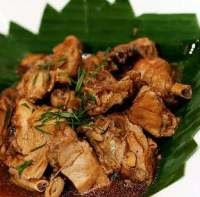I announce my arrival at Bob and Wendy's, computer in tow, ready to blog this new thread. Wendy's shout from the kitchen greets me, as if in warning, saying, "I am in my full glory".
As I walk into their kitchen, Wendy is wiping down the spray of chocolate mousse that had swirled wildly out of control from their broken Cuisinart.
I have a blood family and a food family. Sometimes interchangeable. But mostly, my food family: Bob, Wendy, Karen and Jim, are part of my extended family in the SF Bay area.
Now I rarely cook for myself, stuggling maybe to heat up an animal protein to put between two slices of toasted Ezekiel Bread accomplanied by a glass of red. Call it in for the night. But I also carry the blood gene of a hundred generations that compels me to cook lavish, souful meals for a hundred or so friends and strangers.
Fortunately, these two couples provide a social foundation in my life and an appreciation for the need I've got to cook and cook well. We all have that same need. We met years ago at work, and the stars were right for this confluence of disparate individuals to form a bond based on food, work, books and movies that has grown into a serious family. We've nursed each other through career shifts, near-death experiences, life-changing decisions like retiring, caring for aging parents, and being there to lean on when our parents passed.
We started our friendships in middle age, and were amazingly able to knit together with all our hidebound life luggage with acceptance, and compassion. Not everything is peaches. There's an occasional screaming match over politics that would leave a sullen scar over the evening, and an "I oughta'... gesture, hand raised, nostrils flared, teeth bared gesture coming directly from the gaping cultural maw that is commonly known as the Bronxe. (Sorry Jimbo, my blog).
Everything is followed of course, by coffee and biscotti.
I miss them when they're out of town. There is a need we have for each other, like family, which hurts like a yearning when we don't see each other for awhile. I harken back to the night Karen's wonderful baking produced a fresh, homemade bacon and rosemary pizza when I came back to the Bay Area after a life-draining bout with my mother's dementia. She saved my soul that night. Or Wendy and I engaged in deep conversation over the times I wished my life would be more than what it is, over a glass of wine and a goat cheese salad, all the while Wendy reminding me, over and over again, that I am right where I needed to be.
Or Bob and I, with a few horns under our belts, arguing Democratic politics in a death match with no prisoners, or bugging Jim while he fusses over his pot of "gravy" for the pasta with the threat of fisticuffs for some stupid remark he'd make that would set me off.
And by the way, when
are you going to give me your roast turkey recipe, Jimbo?
We give each other cookbooks for Christmas and birthdays. When we get together, our best instincts in nurturing and entertaining each other comes to the fore. We all seem to cook better when we're together for some reason. Like a competition, but mostly because I think we do it because we know we'd all appreciate it. When we get together, I know I'm home.
They worry about me. I know. I get exasperated by them. They know. But I also need them like air and water. They drive me totally batshit. But then, that's what they do.
Just like any other family.






